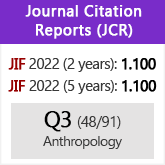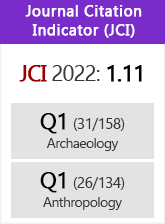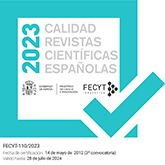Variability of knapping methods and technological change in the Middle Palaeolithic of the Abric Romani (Capellades, Barcelona)
DOI:
https://doi.org/10.3989/tp.1999.v56.i2.275Keywords:
Reduction sequences, Middle Palaeolithic, Abric RomaníAbstract
Lithic reduction sequences are a fundamental topic in palaeolithic research, since they provide data on the behavioural capabilities of early hominids. This paper studies the variability of lithic reduction strategies in the Abric Romaní (Capellades, Barcelona). This site has an extensive stratigraphic sequence, dated between 40 and 70 ka BP. In this sequence, mostly formed by travertine deposits, 27 archaeological levels have been identified, most of them corresponding to the Middle Palaeolithic. The Middle Palaeolithic levels so far excavated (B-L) are dated between 40 and 52 ka BP, and suggest a reconstruction of the behavioural patterns of the Neanderthal groups preceding the early Upper Palaeolithic. The variability of the reduction sequences in a synchronous level and the changes over time are presented in the framework of the operative field concept. The results suggest that the technological changes in the Middle Palaeolithic can be explained by technical criteria that are reflected in different domains of analysis; these criteria are related to the degree of technical knowledge invested in lithic production and the range of technical options envisaged in each archaeological level.
Downloads
Download data is not yet available.
Downloads
Published
1999-12-30
How to Cite
Vaquero, M. (1999). Variability of knapping methods and technological change in the Middle Palaeolithic of the Abric Romani (Capellades, Barcelona). Trabajos De Prehistoria, 56(2), 37–58. https://doi.org/10.3989/tp.1999.v56.i2.275
Issue
Section
Articles
License
Copyright (c) 1999 Consejo Superior de Investigaciones Científicas (CSIC)

This work is licensed under a Creative Commons Attribution 4.0 International License.
© CSIC. Manuscripts published in both the printed and online versions of this Journal are the property of Consejo Superior de Investigaciones Científicas, and quoting this source is a requirement for any partial or full reproduction.All contents of this electronic edition, except where otherwise noted, are distributed under a “Creative Commons Attribution 4.0 International” (CC BY 4.0) License. You may read here the basic information and the legal text of the license. The indication of the CC BY 4.0 License must be expressly stated in this way when necessary.
Self-archiving in repositories, personal webpages or similar, of any version other than the published by the Editor, is not allowed.
















